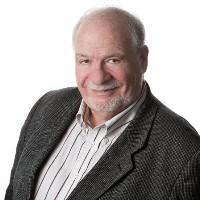1.Brought toxic hidden agenda into open to resolve problem at a church of 200 members
2 Coached small biotech startup to improve applications to review board and FDA.
3. Coached new teams at Abilities United to inspire themselves to high performance (details below).
4. Coached 2 failing Toastmasters Clubs to inspire themselves to high performance (details below).
5. Coached teams at American Red Cross to high performance (details below)
6. Assured > 100 professionals had effective resumes by re-writing presentation and handouts for Targeting Your Resume Workshop to create exciting Summary statements by facilitating workshops and coaching one-on-one.
7. Ensured > 150 professionals created lists of solid Problem-Solution-Result statements and effective resumes by facilitating workshops and coaching one-on-one.
8. Trained >150 professionals to facilitate by co-facilitating Facilitation Skills Workshops.
9. Trained >100 professionals to reduce stress quickly and effectively.
10. Created Enterprise Resiliency Group (ERG) by bringing 6 experts into cohesive emergency and disaster planning team, and finding non-profit healthcare beta-test site
11. Wrote 32-page report of prioritized suggestions to healthcare non-profit, by leading core ERG team and 6 others through successful test in minimal time and resolving conflicts among the team so report was unanimous
12. Made the non-profit resilient – able to overcome potential emergencies, disasters and business disruptions -- by guiding management and staff to implement ERG’s recommendations
13. Assured Abilities United flourished despite loss of 20% of State funding by inspiring and coaching departmental managers to align across silos, to explore viewpoints and methods outside their comfort zones, and to collaborate on social enterprises
14. Resolved 28 health and safety issues for disabled clients of Abilities United by investigating nature and degree of problems, clarifying priorities, and working with Board and departmental managers to create effective solutions.
15. Ensuring Abilities United improves and expands its services by chairing task force and committee on strategic plans, chairing Operations Review Committee and Aquatic Long-Term Options Task Force, and serving on ReDevelopment Task Force.
16. Engaged 15% more volunteers for new America Red Cross Chapter by organizing, coaching, and leading a mentoring program: acclaimed by Executive Director and Board as major success
17. Inspired key people to collaborate in new Red Cross Chapter by resolving conflicts between people from two disparate, culturally-distinct, former chapters during merger.
18. Led more than 15 focused teams of Red Cross Chapter to aid clients effectively and compassionately in responses to local and national disasters, by coaching members of each team while in action.
19. Motivated a failing Toastmasters club at an IT firm to succeed by coaching and inspiring members to align purpose, mission, and activities
20. Coached a Toastmasters club that had failed with an earlier coach to align to high-performance and achieve in five months Select Distinguished status, the second highest club award
21. Coached and inspired officers and members of 5 individual Toastmasters clubs, 4 of them at IT firms, so as to lead the Area to be Distinguished.
22. Created non-profit to loan funds to the dying to improve quality of life. Inspired team, resolved conflicts, and wrote much of business plan. (Market collapse of 2008 blocked further efforts).
23. Selected by State Medical Society to learn national program on educating profession end-of-life care (EPEC) and bring it to New York State.
24. Trained 1500 physicians, nurses, social workers, administrators, chaplains and other healthcare workers both in effective, compassionate ways to care for dying people so as to maximize quality of remaining life, and to train their own colleagues; by aligning and inspiring faculties to facilitate 20 EPEC Programs in 5 states.
25. Improved 12 NY EPEC Programs by writing and facilitating modules on Cultural and Spiritual Diversity and on Stress Reduction for the Practitioner
26. Enabled modern NY State law for dying people by developing consensus from divisive conflict on Bioethics Committee of the Medical Society of NY so Medical Society gave unanimous opinion to Legislature and Governor’s office.
27. Saved 4-fold ROI annually for medical center in reducing re-admission rates from 20 monthly to almost none, by aligning and coaching multi-disciplinary team to use modern treatments.
28. Authored 89 original medical/scientific communications on diseases and medical ethics; improved quality of practice and patient advocacy: by forming >30 aligned teams of physicians, scientists; medical, graduate, and college students; and physician-extenders: teams doing clinical, educational, and research activities; and coaching teams and members to work humanely.
29. Ensured >150 terminal patients got quality of life and treatment they preferred by coaching and resolving conflicts among families and healthcare staff over dogma, uncertainty and guilt.
30. Produced modern, scientifically-based, humane driving regulations about health in NY State by creating consensus from conflicts on the DMV Medical Advisory Board and coaching Board members.
31. Coached and tutored 50 - 60 medical students on improving inter-personal relations so as to discuss divisive political and ethical medical topics with respect for opposite opinions.
32. Inspired more than 20 teams of physicians to effectiveness and quality in treating acute illnesses of artists so latter could perform.
33. Enabled more than 200 performers to continue their profession by coaching them to avoid and reduce stresses that lead to disabling problems.
34. Coached authors to write clearly and concisely for first book on pathophysiology and treatment of Inherited Ataxias, organized International Symposium of 125 participants, raised funds, and ran Symposium smoothly.
1.Brought toxic hidden agenda into open to resolve problem at a church of 200 members
2 Coached small biotech startup to improve applications to review board and FDA.
3. Coached new teams at Abilities United to inspire themselves to high performance (details below).
4. Coached 2 failing Toastmasters Clubs to inspire themselves to high performance (details below).
5. Coached teams at American Red Cross to high performance (details below)
6. Assured > 100 professionals had effective resumes by re-writing presentation and handouts for Targeting Your Resume Workshop to create exciting Summary statements by facilitating workshops and coaching one-on-one.
7. Ensured > 150 professionals created lists of solid Problem-Solution-Result statements and effective resumes by facilitating workshops and coaching one-on-one.
8. Trained >150 professionals to facilitate by co-facilitating Facilitation Skills Workshops.
9. Trained >100 professionals to reduce stress quickly and effectively.
10. Created Enterprise Resiliency Group (ERG) by bringing 6 experts into cohesive emergency and disaster planning team, and finding non-profit healthcare beta-test site
11. Wrote 32-page report of prioritized suggestions to healthcare non-profit, by leading core ERG team and 6 others through successful test in minimal time and resolving conflicts among the team so report was unanimous
12. Made the non-profit resilient – able to overcome potential emergencies, disasters and business disruptions -- by guiding management and staff to implement ERG’s recommendations
13. Assured Abilities United flourished despite loss of 20% of State funding by inspiring and coaching departmental managers to align across silos, to explore viewpoints and methods outside their comfort zones, and to collaborate on social enterprises
14. Resolved 28 health and safety issues for disabled clients of Abilities United by investigating nature and degree of problems, clarifying priorities, and working with Board and departmental managers to create effective solutions.
15. Ensuring Abilities United improves and expands its services by chairing task force and committee on strategic plans, chairing Operations Review Committee and Aquatic Long-Term Options Task Force, and serving on ReDevelopment Task Force.
16. Engaged 15% more volunteers for new America Red Cross Chapter by organizing, coaching, and leading a mentoring program: acclaimed by Executive Director and Board as major success
17. Inspired key people to collaborate in new Red Cross Chapter by resolving conflicts between people from two disparate, culturally-distinct, former chapters during merger.
18. Led more than 15 focused teams of Red Cross Chapter to aid clients effectively and compassionately in responses to local and national disasters, by coaching members of each team while in action.
19. Motivated a failing Toastmasters club at an IT firm to succeed by coaching and inspiring members to align purpose, mission, and activities
20. Coached a Toastmasters club that had failed with an earlier coach to align to high-performance and achieve in five months Select Distinguished status, the second highest club award
21. Coached and inspired officers and members of 5 individual Toastmasters clubs, 4 of them at IT firms, so as to lead the Area to be Distinguished.
22. Created non-profit to loan funds to the dying to improve quality of life. Inspired team, resolved conflicts, and wrote much of business plan. (Market collapse of 2008 blocked further efforts).
23. Selected by State Medical Society to learn national program on educating profession end-of-life care (EPEC) and bring it to New York State.
24. Trained 1500 physicians, nurses, social workers, administrators, chaplains and other healthcare workers both in effective, compassionate ways to care for dying people so as to maximize quality of remaining life, and to train their own colleagues; by aligning and inspiring faculties to facilitate 20 EPEC Programs in 5 states.
25. Improved 12 NY EPEC Programs by writing and facilitating modules on Cultural and Spiritual Diversity and on Stress Reduction for the Practitioner
26. Enabled modern NY State law for dying people by developing consensus from divisive conflict on Bioethics Committee of the Medical Society of NY so Medical Society gave unanimous opinion to Legislature and Governor’s office.
27. Saved 4-fold ROI annually for medical center in reducing re-admission rates from 20 monthly to almost none, by aligning and coaching multi-disciplinary team to use modern treatments.
28. Authored 89 original medical/scientific communications on diseases and medical ethics; improved quality of practice and patient advocacy: by forming >30 aligned teams of physicians, scientists; medical, graduate, and college students; and physician-extenders: teams doing clinical, educational, and research activities; and coaching teams and members to work humanely.
29. Ensured >150 terminal patients got quality of life and treatment they preferred by coaching and resolving conflicts among families and healthcare staff over dogma, uncertainty and guilt.
30. Produced modern, scientifically-based, humane driving regulations about health in NY State by creating consensus from conflicts on the DMV Medical Advisory Board and coaching Board members.
31. Coached and tutored 50 - 60 medical students on improving inter-personal relations so as to discuss divisive political and ethical medical topics with respect for opposite opinions.
32. Inspired more than 20 teams of physicians to effectiveness and quality in treating acute illnesses of artists so latter could perform.
33. Enabled more than 200 performers to continue their profession by coaching them to avoid and reduce stresses that lead to disabling problems.
34. Coached authors to write clearly and concisely for first book on pathophysiology and treatment of Inherited Ataxias, organized International Symposium of 125 participants, raised funds, and ran Symposium smoothly.







